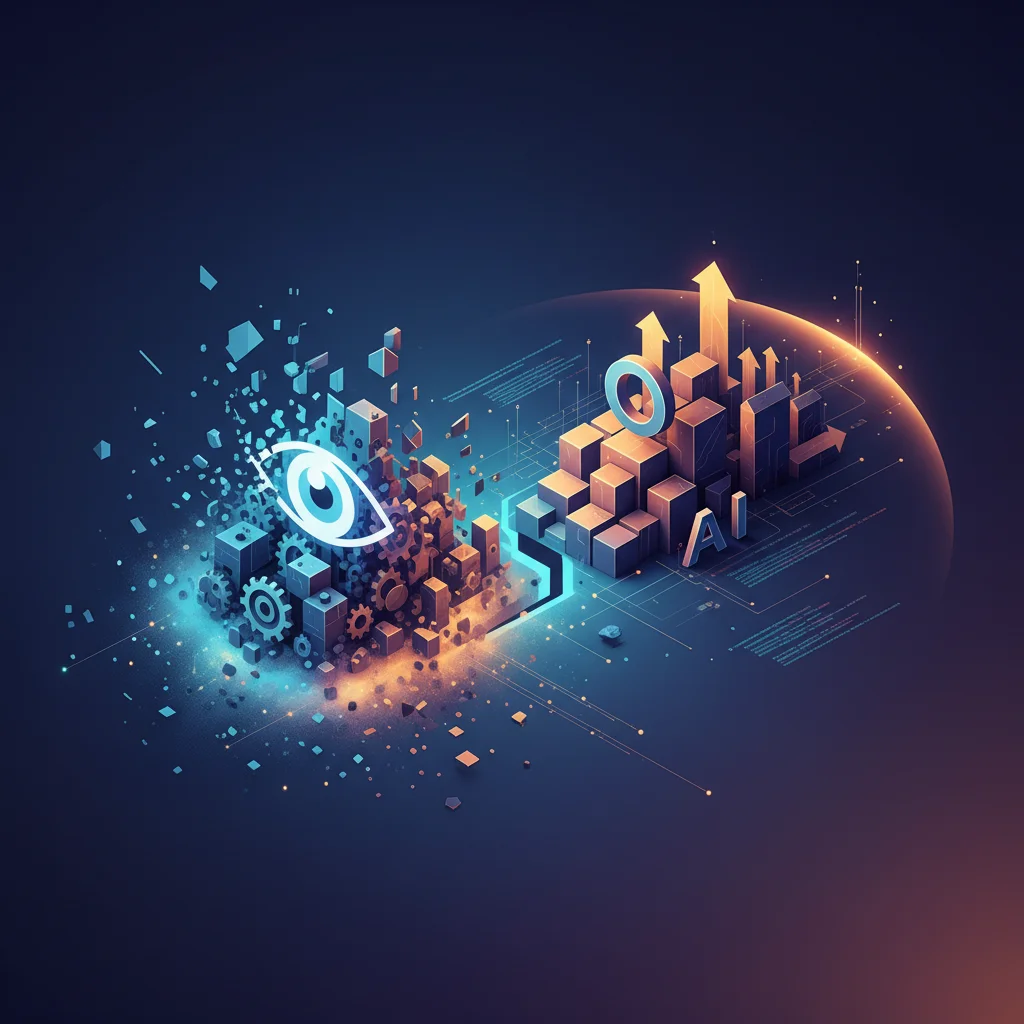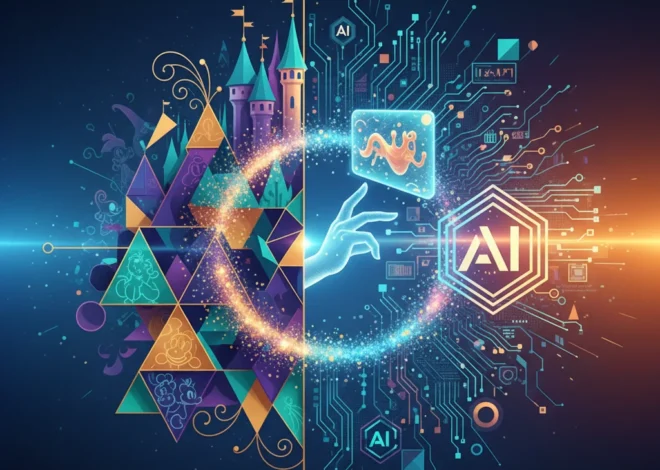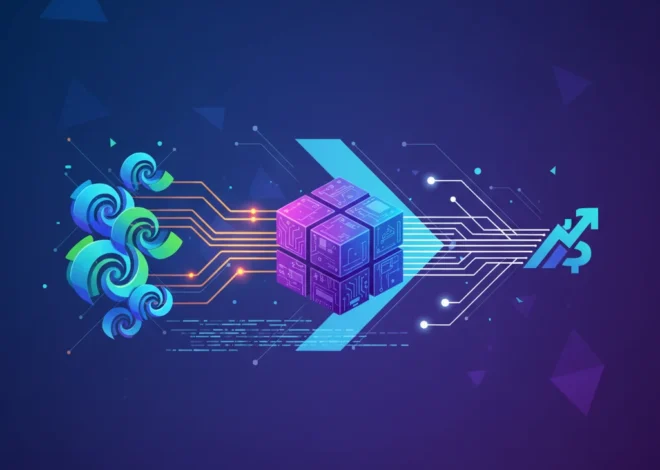
The End of an Era: OpenAI Finalizes its For-Profit Pivot, Reshaping the Future of AI
It’s a story that feels almost like a Silicon Valley screenplay. A group of brilliant minds founds a non-profit research lab with a noble, almost utopian, mission: to build artificial general intelligence (AGI) that benefits all of humanity. Fast forward a few years, and that same organization, now the creator of the world-changing ChatGPT, has quietly completed its transformation into a full-fledged for-profit powerhouse. This isn’t just a change in tax status; it’s a fundamental shift in the DNA of the world’s most influential AI company.
The latest development, as reported by the BBC, confirms the finalization of this new structure, with long-term investor Microsoft solidifying its position by retaining a significant 27% stake in the company. While the news itself is concise, its implications are monumental, sending ripples across the entire technology landscape. For developers, entrepreneurs, and tech professionals, this isn’t just a headline—it’s a paradigm shift that will dictate the future of software, innovation, and the very tools we use to build tomorrow.
So, what does this pivot truly mean? How did a non-profit dedicated to AI safety become a commercial juggernaut? And most importantly, what are the downstream effects for the startups, programmers, and businesses building on the OpenAI platform? Let’s unravel the journey, analyze the new reality, and explore the profound consequences of this transformation.
From Idealistic Mission to “Capped-Profit” Hybrid
To understand the gravity of the current moment, we have to rewind to OpenAI’s origins. Founded in 2015, OpenAI LP was launched as a non-profit research laboratory. Its founding mission was explicit: to counter the immense power of large corporations (like Google) in the AI space and ensure that the path to AGI was paved with caution and a commitment to the public good. The initial goal was to prevent a single corporate entity from monopolizing a technology with the potential to reshape civilization.
However, the founders quickly ran into a harsh reality of modern artificial intelligence research: it is astronomically expensive. The computational power, the top-tier talent, and the massive datasets required to train models like GPT-3 and GPT-4 cost not millions, but billions of dollars. A non-profit donation-based model was simply unsustainable for competing at the cutting edge of machine learning.
This led to a pivotal moment in 2019 when OpenAI announced its restructuring into a “capped-profit” company. As explained in their founding announcement for the LP, this was a novel and complex hybrid. The new entity, OpenAI LP, could raise investment capital and grant equity to employees, but the returns for its first-round investors were capped at 100 times their investment. Any profit generated beyond that cap would be funneled back to the original non-profit parent, OpenAI Inc., to be used for educational and research initiatives. It was an attempt to blend the best of both worlds: the capital-raising power of a startup with the ethical oversight of a non-profit.
This unique structure is what attracted a colossal multi-year, multi-billion dollar investment from Microsoft, which saw the immense potential of integrating OpenAI’s models into its software and cloud ecosystem.
The New Reality: A For-Profit Engine with a Non-Profit “Soul”
The recent news signifies the final stage of this evolution. While the non-profit board technically still exists to “oversee” the mission, the operational entity is now a for-profit enterprise, driven by commercial goals, product roadmaps, and investor returns. Microsoft’s deep integration is the most visible sign of this new era. Their investment isn’t just cash; it’s a strategic partnership providing the essential cloud computing infrastructure via Azure that OpenAI needs to operate and scale.
To clarify the shift, let’s compare the core principles of OpenAI’s structures over time.
| Aspect | Original Non-Profit (2015-2019) | “Capped-Profit” Hybrid (2019-2023) | Current For-Profit Structure (2024 onwards) |
|---|---|---|---|
| Primary Goal | Ensure AGI benefits all humanity; focus on safety and research. | Balance research mission with the need for commercial funding. | Commercialize AI, drive product adoption, and generate returns for investors. |
| Funding Model | Philanthropic donations. | Venture capital with capped returns for early investors. | Massive corporate investment (e.g., Microsoft) with significant equity stakes. |
| Key Driver | Research breakthroughs and open publication. | Scaling models and securing computational resources. | Market share, enterprise contracts, and platform growth (SaaS). |
| Relationship with Microsoft | Non-existent. | Key strategic investor and cloud partner. | Deeply integrated partner with a 27% stake and board influence. |
This table illustrates a clear trajectory away from pure research and toward a model focused on commercial viability and market dominance. The “capped-profit” phase was a bridge, and OpenAI has now fully crossed it.
The Ripple Effect: What This Means for the Tech Ecosystem
This structural change isn’t just an internal affair for OpenAI. It has profound and immediate consequences for everyone in the technology world.
For Developers and Programmers
On one hand, a commercially focused OpenAI means a more stable, robust, and feature-rich platform. We can expect more enterprise-grade APIs, better documentation, stronger SLAs (Service Level Agreements), and deeper integrations with essential tools like Microsoft Azure. The reliability of the software and services will likely improve as they cater to high-paying enterprise clients. The focus on programming and development tools will intensify.
On the other hand, costs could rise. The days of generous free tiers and experimental, low-cost API access may be numbered. Pricing models will be optimized for revenue, which could squeeze out hobbyists and early-stage startups. Furthermore, developers are now building on a platform that is intrinsically tied to Microsoft’s strategic interests, creating a degree of platform risk that didn’t exist before.
The Billion COBOL Catastrophe: How Ancient Tech Fueled a National Crisis
For Startups and Entrepreneurs
The dynamic for startups is a classic double-edged sword. OpenAI’s platform has fueled a Cambrian explosion of innovation, allowing small teams to build powerful AI-driven applications that would have been impossible just a few years ago. This new for-profit focus will likely accelerate the creation of tools that help startups build faster.
However, the “platform vs. competitor” risk is now magnified. Startups building a thin wrapper around the GPT API are in a precarious position. OpenAI, driven by its own growth targets, could easily launch a new feature that makes jejich entire product obsolete overnight. This forces entrepreneurs to focus on building deep, defensible moats through proprietary data, unique workflows, or strong community engagement rather than just relying on the raw power of the underlying machine learning model.
For Cybersecurity and Automation
A more powerful, commercially driven AI platform accelerates both the potential for beneficial automation and the risks associated with malicious use. For businesses, this means more sophisticated tools for automating workflows, generating code, and analyzing data. In cybersecurity, it offers the promise of AI-driven threat detection and response systems that can operate at machine speed. However, it also lowers the barrier for bad actors to develop sophisticated phishing schemes, generate malware, or create disinformation at an unprecedented scale. The for-profit incentive to push capabilities ever forward may sometimes run ahead of the industry’s ability to build corresponding safeguards.
The New Competitive Landscape: A Game of AI Thrones
OpenAI’s full embrace of its partnership with Microsoft solidifies the AI landscape as a battleground of tech titans. The primary axes of competition are now clear:
- OpenAI + Microsoft: A deeply integrated partnership combining cutting-edge AI research with the world’s leading enterprise software and cloud distribution network.
- Google (Alphabet): A vertically integrated giant with its own world-class research (DeepMind), massive datasets from its consumer products, custom AI chips (TPUs), and a global cloud platform (GCP). Their Gemini family of models is the direct competitor to GPT.
- Anthropic: Founded by former OpenAI researchers with a heavy emphasis on AI safety, Anthropic has positioned itself as the “safer” alternative, attracting billions in investment from Google and Amazon (source), who are keen to support a strong competitor to the OpenAI/Microsoft alliance.
- Meta: Pursuing a more open-source strategy with its Llama family of models, Meta aims to commoditize the technology and prevent any single company from controlling the AI ecosystem.
This consolidation means that the future of AI innovation will likely be shaped by the strategic decisions and vast resources of a handful of mega-corporations. The race is on, and the stakes couldn’t be higher.
The Small Smartphone Paradox: What a Niche Market Failure Teaches Every Tech Startup
Conclusion: The Profit Motive Paradox
OpenAI’s journey from a non-profit research lab to a for-profit behemoth is more than just a corporate restructuring story. It’s a microcosm of the entire AI industry’s evolution. It highlights the central paradox of modern AI: the pursuit of a technology that could benefit all of humanity is so expensive that it requires the very capitalist, competitive structures its founders originally sought to counterbalance.
The completion of this shift marks the end of OpenAI’s idealistic beginnings and the start of its reign as a commercial titan. For the tech world, this brings both incredible opportunity and significant challenges. We will get more powerful, accessible, and reliable AI tools than ever before, fueling a new wave of software and automation. But it also concentrates immense power in the hands of a few, raises critical questions about AI safety and governance, and forces us to confront the reality that the future of artificial intelligence is now inextricably linked to the pursuit of profit.
The genie is out of the bottle. The challenge now is not to put it back in, but to learn how to guide its immense power wisely in this new, commercially-driven world.


